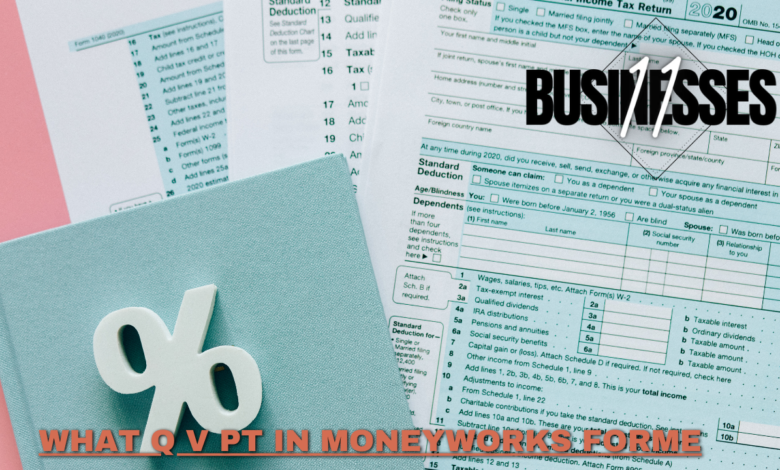What Q V Pt in MoneyWorks Forme: A Guide for Better Inventory Management

In the fast-paced world of finance and accounting, keeping track of your inventory can be a daunting task. That’s where MoneyWorks comes into play, offering robust tools to simplify your financial management.
One essential concept within MoneyWorks is Q V Pt, which stands for Quantity, Value, and Price. By grasping this concept, you can streamline your inventory management, enhance decision-making, and ultimately improve your business’s financial health.
This article aims to demystify Q V Pt in MoneyWorks and illustrate its importance through clear explanations and practical tips.
What Does Q V Pt Mean in MoneyWorks?
Q V Pt stands for Quantity, Value, and Price. In MoneyWorks, this term is used to represent the three critical components of inventory management and sales reporting.
When we talk about Quantity, it refers to the number of items you have in stock. For instance, if you’re running a small shop, knowing how many items you have helps you avoid running out of stock or overstocking items that aren’t selling.
Value refers to the total worth of your inventory. This number is essential for understanding how much money you have tied up in stock.
It’s the result of multiplying the quantity of items by their price. For example, if you have 50 T-shirts that each cost $10, your inventory value is $500.
Price is simply the selling price of each item. It’s crucial to set the right price to ensure you make a profit while still appealing to your customers.
Understanding Q V Pt in MoneyWorks helps you keep track of your inventory and make better financial decisions.
Why Is Understanding Q V Pt Important?
Understanding what q v pt in moneyworks forme is vital for anyone involved in inventory management. For business owners and managers, it allows for informed decision-making regarding purchasing, stocking, and pricing items.
When you know how much inventory you have (Quantity), its worth (Value), and how much you can sell it for (Price), you can create effective strategies to improve your business.
For example, if you notice that a particular item has a high quantity but a low value, you might want to lower the price to encourage sales. This can prevent your inventory from sitting unused, which could lead to lost profits.
In summary, knowing Q V Pt helps you keep your business running smoothly and profitably.
How Can Q V Pt Help Me Manage My Inventory?
Using Q V Pt effectively can significantly enhance your inventory management. It allows you to track your stock levels, understand product performance, and make informed purchasing decisions.
For instance, let’s say you run a bakery. Knowing the quantity of baked goods you have helps you understand how much you can sell each day. By checking the value, you can decide whether to bake more items or lower the prices of items that aren’t selling well.
MoneyWorks makes it easy to track these numbers. You can generate reports that show you the current quantity of each item, its total value, and its selling price.
This visibility allows you to make quick adjustments to your inventory strategy, ensuring you always have the right items on hand.
In the long run, using Q V Pt can save you time and money while increasing your profits.
What Are the Benefits of Tracking Q V Pt?
There are numerous benefits to tracking Q V Pt in MoneyWorks. Here are some key advantages:
Improved Decision-Making: When you have accurate data on your inventory, you can make better decisions about when to order new stock or adjust prices.
Cost Savings: By monitoring inventory levels and values, you can avoid overstocking and reduce carrying costs.
Enhanced Profitability: Understanding your inventory’s value and price allows you to set competitive prices, which can lead to increased sales and profits.
Better Cash Flow Management: Knowing how much cash is tied up in inventory helps you manage your finances more effectively.
Reduced Waste: By understanding which items are not selling, you can take steps to reduce waste and improve your overall inventory turnover.
By effectively tracking Q V Pt, you can enjoy these benefits and streamline your business operations.
| Benefits of Tracking Q V Pt | Description |
| Improved Decision-Making | Accurate data helps in making informed decisions about inventory. |
| Cost Savings | Reduces overstocking and lowers carrying costs. |
| Enhanced Profitability | Enables competitive pricing for increased sales. |
| Better Cash Flow Management | Helps in understanding cash tied up in inventory. |
| Reduced Waste | Identifies non-selling items to improve turnover. |
How Do I Calculate Q V Pt in MoneyWorks?
Calculating Q V Pt in MoneyWorks is simple. Here’s how you can do it step by step:
Determine Quantity: Check how many units of each product you have in stock. This number is usually displayed on your MoneyWorks dashboard.
Find Value: To calculate the total value, multiply the quantity by the price. For example, if you have 20 items that cost $15 each, the value would be 20 × $15 = $300.
Know the Price: The selling price for each item should be listed in your inventory. Make sure this price reflects the current market value to stay competitive.
Use Reports: MoneyWorks offers reporting features that can automatically calculate these figures for you, saving time and reducing errors.
By following these steps, you can efficiently track your Q V Pt and manage your inventory.
What Tools Does MoneyWorks Offer for Managing Q V Pt?
MoneyWorks provides various tools to help users manage Q V Pt efficiently. Here are some of the key features that can assist you:
Inventory Reports: MoneyWorks allows you to generate detailed inventory reports. These reports show you the quantity, value, and price of all your products in one place.
Stock Alerts: You can set up alerts to notify you when your inventory levels are low. This feature helps you avoid stockouts and ensures you never run out of popular items.
Sales Tracking: MoneyWorks can track sales data, allowing you to see how well your products are performing. This information is crucial for making pricing decisions.
Integration with Accounting: MoneyWorks seamlessly integrates inventory management with your accounting. This connection ensures that your financial records are always up to date, making it easier to manage cash flow.
By utilizing these tools, you can better manage Q V Pt and improve your overall business performance.
How Can I Improve My Q V Pt Management?
Improving your Q V Pt management can lead to better inventory control and increased profits. Here are some strategies to help you enhance your management:
Regular Audits: Conduct regular inventory audits to ensure your records match your physical stock. This practice helps identify discrepancies early.
Set Reorder Points: Establish reorder points for each product to avoid running low on essential items. This strategy helps maintain optimal inventory levels.
Analyze Sales Trends: Use MoneyWorks reports to analyze sales trends over time. This analysis can help you make informed decisions about pricing and promotions.
Train Your Staff: Make sure your team understands how to use MoneyWorks effectively. Proper training can improve accuracy in tracking Q V Pt.
Utilize Technology: Consider using additional technology, such as barcode scanners, to streamline inventory management further.
By implementing these strategies, you can improve your Q V Pt management and make your business more efficient.
FAQs
what q v pt in moneyworks forme?
Q V Pt stands for Quantity, Value, and Price. It is a critical term used in MoneyWorks to help manage inventory effectively.
How can Q V Pt help my business?
By understanding Q V Pt, you can make informed decisions about purchasing, stocking, and pricing items. This knowledge can lead to better inventory management and increased profitability.
Can I calculate Q V Pt on my own?
Yes! You can calculate Q V Pt by determining the quantity of items you have, multiplying that by the price to find the total value, and checking the selling price of each item what q v pt in moneyworks forme.
What tools does MoneyWorks offer for managing Q V Pt?
MoneyWorks offers inventory reports, stock alerts, sales tracking, and integration with accounting features, all of which help you manage Q V Pt effectively what q v pt in moneyworks forme.
How can I improve my Q V Pt management?
You can enhance your management by conducting regular audits, setting reorder points, analyzing sales trends, training your staff, and utilizing technology what q v pt in moneyworks forme.
Conclusion
In conclusion, understanding “what q v pt in moneyworks forme” is crucial for anyone looking to manage their inventory effectively.
With its focus on Quantity, Value, and Price, this concept provides valuable insights that can lead to smarter business decisions.
By leveraging the tools available in MoneyWorks and implementing best practices for inventory management, you can optimize your operations, improve profitability, and ensure your business remains competitive.
Embracing these principles not only simplifies the complexities of inventory management but also empowers you to drive your business toward greater success.
Whether you are a small business owner or managing a larger enterprise, mastering Q V Pt can be a game changer in your financial journey.




